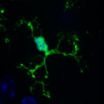(Press-News.org) These four observations made by Hubble's Advanced Camera for Surveys give a close up view of the Andromeda Galaxy, also known as Messier 31 (M 31). Observations of most galaxies do not show the individual stars — even the most powerful telescopes cannot normally resolve the cloudy white shapes into their hundreds of millions of constituent stars.
In the case of the Andromeda Galaxy, however, astronomers have a few tricks up their sleeves. Firstly, images from Hubble Space Telescope have unparalleled image quality as a result of the telescope's position above the atmosphere. Secondly, M 31 is closer to our own galaxy than any other spiral galaxy (so close that it can even be seen with the naked eye on a very dark night [1]). And thirdly, these observations avoid the crowded centre of the galaxy, where the stars are closest together and hardest to separate from each other.
The resulting images offer a different perspective on a spiral galaxy. Far from being an opaque, dense object, Hubble reminds us that the dominant feature of a galaxy is the huge voids between its stars. Thus, these images do not only show stars in the Andromeda Galaxy (and a handful of bright Milky Way stars that are in the foreground): they also let us see right through the galaxy, revealing far more distant galaxies in the background.
The four images in this release look superficially similar, but on closer inspection they reveal some important differences.
The two images taken in M 31's halo show the lowest density of stars. The halo is the huge and sparse sphere of stars that surrounds a galaxy. While there are relatively few stars in a galaxy's halo, studies of the rotation rate of galaxies suggest that there is a great deal of invisible dark matter.
Meanwhile, the images of stars in the Andromeda Galaxy's disc and a region known as the giant stellar stream show stars far more densely packed, largely outshining the background galaxies. The galaxy's disc includes the distinctive spiral arms (as well as dimmer and less numerous stars in the gaps between them), while the stream is a large structure which extends out from the disc, and is probably a remnant of a smaller galaxy that was absorbed by the Andromeda Galaxy in the past.
These observations were made between 2004 and 2007 to observe a wide variety of stars in Andromeda, ranging from faint main sequence stars like our own Sun, to the much brighter RR Lyrae stars, which are a type of variable star. With these measurements, astronomers can determine the chemistry and ages of the stars in each part of the Andromeda Galaxy.
The purpose of these observations also explains their exceptional depth: to gain useful data on dim, distant stars, a long series of individual exposures had to be made in each field. Together they combine to make images with a long exposure time. This has the side-effect of also revealing the faint background galaxies, which would otherwise have been invisible.
INFORMATION:
Notes
The Hubble Space Telescope is a project of international cooperation between ESA and NASA.
[1] The Andromeda Galaxy's full diameter in the sky is actually around three degrees, six times the width of the full Moon. But the outer regions of the galaxy are much too faint to see without a telescope.
Image credit: NASA, ESA and T. M. Brown (STScI)
Links
- Images of Hubble: http://www.spacetelescope.org/images/archive/category/spacecraft/
Contacts
Oli Usher
Hubble/ESA
Garching, Germany
Tel: +49-89-3200-6855
Email: ousher@eso.org
4 unusual views of the Andromeda Galaxy
2011-07-22
ELSE PRESS RELEASES FROM THIS DATE:
Workings of brain protein suggest therapies for inherited intellectual disability, autism
2011-07-22
Researchers now have a much clearer understanding of how mutations in a single gene can produce the complex cognitive deficits characteristic of Fragile X Syndrome, the most common inherited form of intellectual disability. As the majority of patients with Fragile X Syndrome also display autism-like symptoms, the findings offer hope for treating both conditions.
A report in the July 22nd issue of the journal Cell, published by Cell Press, defines a set of messenger RNA (mRNA) molecules that the Fragile-X mental retardation protein (FMRP) binds in the brains of mice. ...
Targeting toxin trafficking
2011-07-22
Toxins produced by plants and bacteria pose a significant threat to humans, as emphasized by the recent effects of cucumber-borne Shiga toxin in Germany. Now, new research published on July 21st by the Cell Press journal Developmental Cell provides a clearer view of the combination of similar and divergent strategies that different toxins use to invade a human host cell.
Ricin is a highly toxic protein derived from the castor bean plant that has raised concerns as a potentially lethal biological weapon. Pseudomonas Exotoxin A (PE) is a sometimes deadly protein produced ...
Breastfeeding may prevent asthma
2011-07-22
Feeding a baby on only breast milk and for up to 6 months after birth can reduce their risk of developing asthma-related symptoms in early childhood, according to new research.
The study, which is published online today (21 July 2011) in the European Respiratory Journal, looked at the impact of the duration of breastfeeding and the introduction of alternative liquids or solids in addition to breast milk.
The researchers, from the Generation R Study, Erasmus Medical Center in The Netherlands, used questionnaires to gather data from over 5,000 children. They ascertained ...
Proteins enable essential enzyme to maintain its grip on DNA
2011-07-22
COLUMBUS, Ohio – Scientists have identified a family of proteins that close a critical gap in an enzyme that is essential to all life, allowing the enzyme to maintain its grip on DNA and start the activation of genes.
The enzyme, called RNA polymerase, is responsible for setting gene expression in motion in all cells. RNA polymerase wraps itself around the double helix of DNA, using one strand to match nucleotides and make a copy of genetic material.
RNA polymerase cannot fall off of the DNA or stop this process once it starts. If it does, no proteins will be made, ...
UNC researchers identify seventh and eighth bases of DNA
2011-07-22
(Embargoed) CHAPEL HILL – For decades, scientists have known that DNA consists of four basic units -- adenine, guanine, thymine and cytosine. Those four bases have been taught in science textbooks and have formed the basis of the growing knowledge regarding how genes code for life. Yet in recent history, scientists have expanded that list from four to six.
Now, with a finding published online in the July 21, 2011, issue of the journal Science, researchers from the UNC School of Medicine have discovered the seventh and eighth bases of DNA.
These last two bases – called ...
Working mothers and the effects on children
2011-07-22
Parents struggling to combine paid work with bringing up their children now have some positive news thanks to a new study funded by the Economic and Social Research Council (ESRC) on maternal employment and child socio-emotional behaviour in the UK. The research shows that there are no significant detrimental effects on a child's social or emotional development if their mothers work during their early years.
The ideal scenario for children, both boys and girls, was shown to be where both parents lived in the home and both were in paid employment. For children living with ...
Gardening in the brain
2011-07-22
Gardeners know that some trees require regular pruning: some of their branches have to be cut so that others can grow stronger. The same is true of the developing brain: cells called microglia prune the connections between neurons, shaping how the brain is wired, scientists at the European Molecular Biology Laboratory (EMBL) in Monterotondo, Italy, discovered. Published online today in Science, the findings could one day help understand neurodevelopmental disorders like autism.
"We're very excited, because our data shows microglia are critical to get the connectivity ...
Identical virus, host populations can prevail for centuries, WHOI researcher reports
2011-07-22
A Woods Hole Oceanographic Institution (WHOI) scientist, analyzing ancient plankton DNA signatures in sediments of the Black Sea, has found for the first time that the same genetic populations of a virus and its algal host can persist and coexist for centuries. The findings have implications for the ecological significance of viruses in shaping algae ecosystems in the ocean, and perhaps fresh water as well.
"The finding that the DNA of viruses and algal host cells can be preserved in the geological records is of great interest to microbial ecologists," said Marco Coolen ...
Plan to one day end the use of environmentally harmful chemicals on commercial crops developed
2011-07-22
(Edmonton) Two University of Alberta researchers have published a step by step plan to one-day end the use of environmentally harmful chemicals on commercial crops by developing plants that produce their own fertilizer.
U of A plant biologist Allen Good says the energy required to produce nitrogen fertilizers has pushed the world-wide cost for agricultural producers to a $100 billion a year. Good says that while they are necessary for high yields, those nitrogen fertilizers also damage the environment. Emissions from nitrogen fertilizers add to greenhouse gas emissions ...
Repairing our inner clock with a 2-inch fish
2011-07-22
Tel Aviv — Circadian rhythms — the natural cycle that dictates our biological processes over a 24-hour day — does more than tell us when to sleep or wake. Disruptions in the cycle are also associated with depression, problems with weight control, jet lag and more. Now Prof. Yoav Gothilf of Tel Aviv University's Department of Neurobiology at the George S. Wise Faculty of Life Sciences is looking to the common zebrafish to learn more about how the human circadian system functions.
Prof. Gothilf and his Ph.D. student Gad Vatine, in collaboration with Prof. Nicholas Foulkes ...


